African Pirates’ Coast
(Photos WS)
A voyage along the itinerary of the British India Line and Deutsche Ost-Afrika-Linie from South Africa across the Indian Ocean and through the Suez Canal to Europe was always a dream. In spring 2008 an early booking for 2009 was made, but then the horror news of pirates, capturing merchant ships off the coast of Somalia and killing or kidnapping crew members, were published by the media – and our route was to follow exactly that way, passing the Horn of Africa. While in Germany discussions were opened whether it is legally allowed to fight Kalazhnikov-armed pirates, the frigate “Mecklenburg-Vorpommern” saved the cruise ship “Astor” (initially a true Africa liner) in November 2008 from being attacked by two pirate speedboats. And the number of attacks had multiplied… Our cruise however was called into question in a surprisingly different way. A week before the booked departure by plane to South Africa, the cruise tickets were not yet available, the travel agency was declared responsible, but finally the tickets arrived ‘in last minute’.
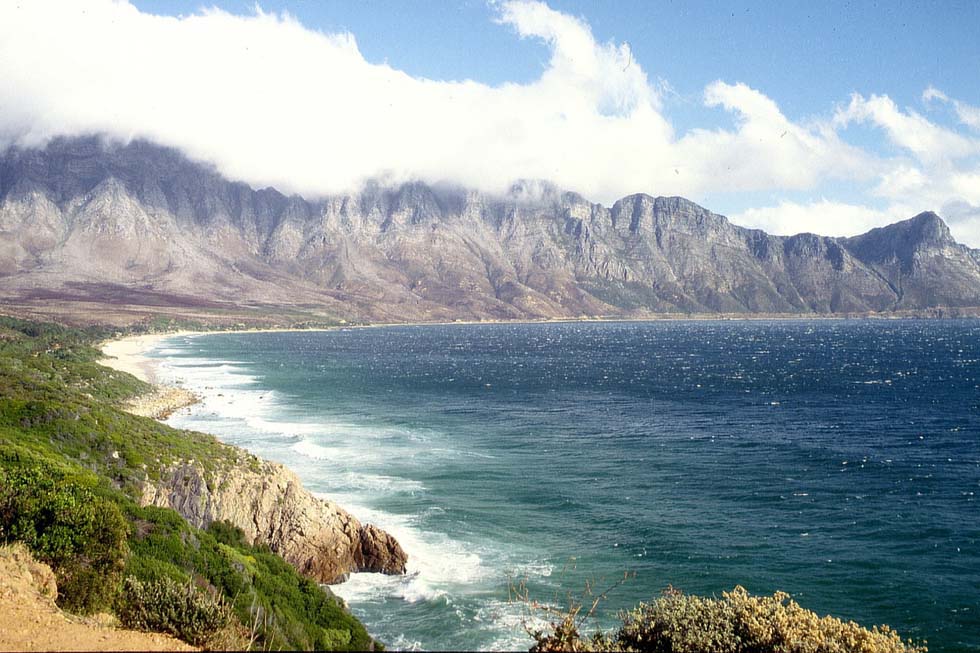
False Bay, South Africa
Port of departure is Durban. A wonderful flight via Qatar is an occasion to see the Horn of Africa, the desert of arid Somalia and the tropical vegetation of Tanzania and Mozambique from an altitude of 30,000 feet. Days after, during the flight from Cape Town to Durban along the coast of South Africa, the False Bay is simmering in the distance and somewhere there must be Cape Aguilhas, the most southerly point of Africa, separating the Atlantic from the Indian Ocean. In Durban the taxi is driving along the harbour bay and there, hidden behind the palm-trees of the promenade, the dark-blue funnel of a MSC ship comes into view and another cruise vessel is moored on the quay, the nice “Princess Daphne”, in 1974 rebuilt from a freighter as “Daphne”, and still afloat. Then, as Durban traditionally was the city of the Indians settled to South Africa and Mahatma Gandhi was living there, an Indian dinner is a “must”.
The other day embarking on the Italian “MSC Rhapsody” at the terminal proves stressing like every embarkation, though the 17,000-ton vessel is laid out for only c.800 passengers, not even 600 had booked and among them 60 have cancelled in the last moment, obviously for fear of the Somali pirates during this March of 2009. On the quay the names of other ships are painted, most striking the letters QE2. Also Swan Hellenic is represented, a tiny British company, which never owned more than one ship – and an aged gentleman tells he had traveled on their old “Minerva”, 99 percent of her passengers being British. On board the “MSC Rhapsody,” apart from English, much German can be heard, also Afrikaans, the language of the Boers, French, Italian and some Spanish. The interior of the ship is cozy, even the showroom comprises only one deck, and in the cabin a painting is marked “commissioned exclusively for Cunard”. It reminds the history of the ship, which once was cruising for the honorable Cunard Line. The folder on board writes: “Rhapsody was originally designed for American billionaire Hugh Heffner to be the perfect ship for the Playboy magazine resort. Her keel was laid on Sept 23, 1974 and the project was completed in 1977 at the Burmeister and Wain yard in Copenhagen. She was fitted at La Spezia, Italy, in the same year, and launched by Princess Grace of Monaco. Cunard purchased and renamed her Cunard Princess (her sister ship was the identical Cunard Countess). She was then chosen to be the perfect R&R ship for US troops fighting in the Desert Storm campaign; what is now the office of the Cruise Director was the Headquarter of General Schwartskopf; what is now the beauty salon was his bedroom. Totally refitted after the war, MSC purchased her in 1995 and she went to service in her new MSC livery as Rhapsody”. Historian Arnold Kludas informed: Launched as “Cunard Conquest”, she was transferred to La Spezia, where the interiors were completed, in 1976 cruising was started as “Cunard Princess” and in 1990 the ship was chartered out to the U.S. Ministry of Defense.
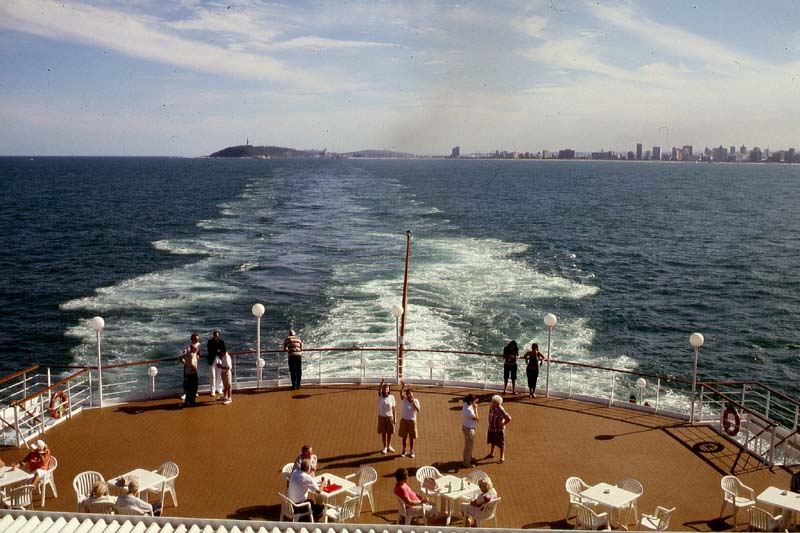
Departure from Durban
It’s Tuesday, 3rd of March 2009, 2 pm. A bulldog-like tug helps towing the “MSC Rhapsody” away from the pier like it must have done with an old ocean liner half a century ago, when neither bow thrusters nor pods had been invented. Then the ship is slicing its furrow through the harbour bay, a dark-green forest at starboard, the container terminal at port side, leaving the skyscrapers of Durban behind. The bay is notorious for its strong current. Passengers stand at the rail, enjoying that farewell. It’s hot, may be 40 degrees C. The sea seems calm, but after having passed the last lighthouse, the “Rhapsody” begins to roll, thus upholding the tradition of many pre-war liners.
Emergency drill, then it’s dinner time, 1st seating, informal always on the first day. The 4 to 5-course menu, every course with three or four dishes for choice, is elegantly served by Giovanni our Italian waiter. The friendly sommeiller is from Indonesia. Our tablemates, the dear German friends Uli and Michael, wine-growers in South Africa, recommend the Nebbiolo d’ Alba, a nice red wine from Italy (and when the sommeiller informs that no more than a dozen bottles are in the cellar, we order them all as a reserve). Later, sitting close to the bar on the open deck, the half moon can be seen, and in the distance the lights from a harbour, probably Richards Bay. And in the bar a fantastic violinist, Artorex Cauneac of the Strauss Duo, is playing Waltz and Czardas. It could have been aboard the “Kaiser Franz-Joseph” of the Unione Austriaca hundred years ago…
Then the rustle of the cabin walls is lulling us into sleep. Reportedly it had been a characteristic item of the wooden sailing ships, but a fellow traveler told us later that he heard it also aboard the aged QE2.
Second day, a sunny morning, and despite of her stabilizers the “Rhapsody” is rolling like a cocktail-shaker, the nickname of those old ocean liners of the past, when stabilizers were still unknown. The strong north-east wind, typical for this area, had been a reason for the East India sailing vessels to take a different eastward course in the utmost south. Take a deck chair and relax… In the afternoon, white cumulus clouds are brewing in the east. On the opposite side the coast of Mozambique is coming into view, while the sun sets golden into the sea. After dinner a Salsa lesson in the ‘8 Bells Disco’ is on the program and dancing with a cruise hostess from Napoli makes forget the rolling of the ship.
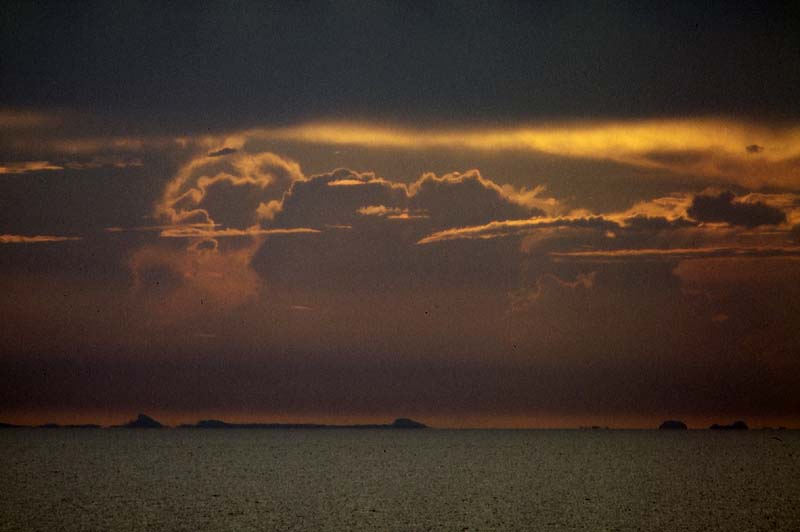
Mozambique
Third day: Madagascar must be situated in the east and the sea is almost quiet now, covered with a tropical haze. It starts raining. A traveler, later our friend Henning, tells the stories of his cruises. He crossed the Atlantic on board the “Queen Elizabeth 2” and the “Queen Victoria”, the latter on a world tour. On both ships service and cuisine were excellent, passengers mostly British, the only difference lay in the interior design, the QE2’s public space being equipped with true wood and designed in the sober ocean liner style of the 20th century. He traveled also on a NCL ship, the “Norwegian Dream”, around South America through the Magellan Strait. It was the most impressive voyage in a landscape of mountains and loneliness. And he undertook a few years ago a journey aboard a container ship, equipped with cabins for only a dozen passengers, from Bremerhaven to Durban. Departure was delayed, for the load had not arrived in time, the stop at Lisbon was between 9 pm and 3 am, off the coast of Cameroon the containers were transferred by tendering and the call at Cape Town was cancelled. The few passengers passed the time playing cards and drinking beer.
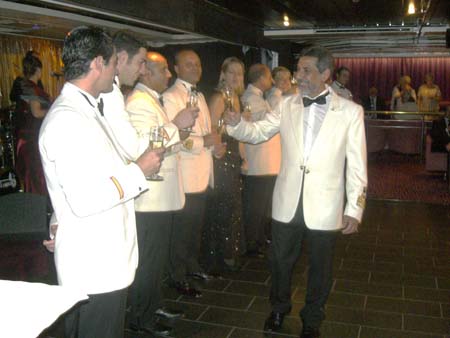
Captain Raffaele Russo’s Party
|
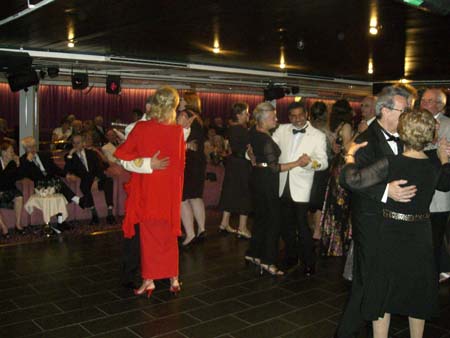
Captain Raffaele Russo’s Party
|
Aboard the “MSC Rhapsody” mainly on the 3rd day life is quite different. It’s the day of the Captain’s Cocktail Party, gala dressing is recommended. Captain Raffaele Russo from Italy makes shake-hands, then his staff is presented, all officers being Italian, only the cruise director is a blond lady from Finland. Finally the Captain opens the dance party. Dinner is formal and after, at half past eight, the show has its furious start “a la francaise”. The most quiet place on that evening is the top lounge. It’s a casino, but only on one of the tables gambling is going on, and the gamblers obviously are the casino staff members. For the last guests the musician is playing decently a Benny Goodman tune.
4th day: the sea is calm and blue. In the west, far away, a coast can be seen, the northern part of Mozambique. What seems to be Madagascar at the other side is only a Fatah Morgana. The calm sea without any wind would not be a good place for sailing ships “We were lying off Madagascar…”, who doesn’t remember that old shanty? In the evening the coast comes once again into view, bizarre pyramids are rising their top. Could it be Cabo Delgado? The sun has hidden behind dark clouds. But suddenly, like the scenario of a gigantic theatre, the clouds are opening exactly on the right point, presenting the most pompous African sunset ever seen.
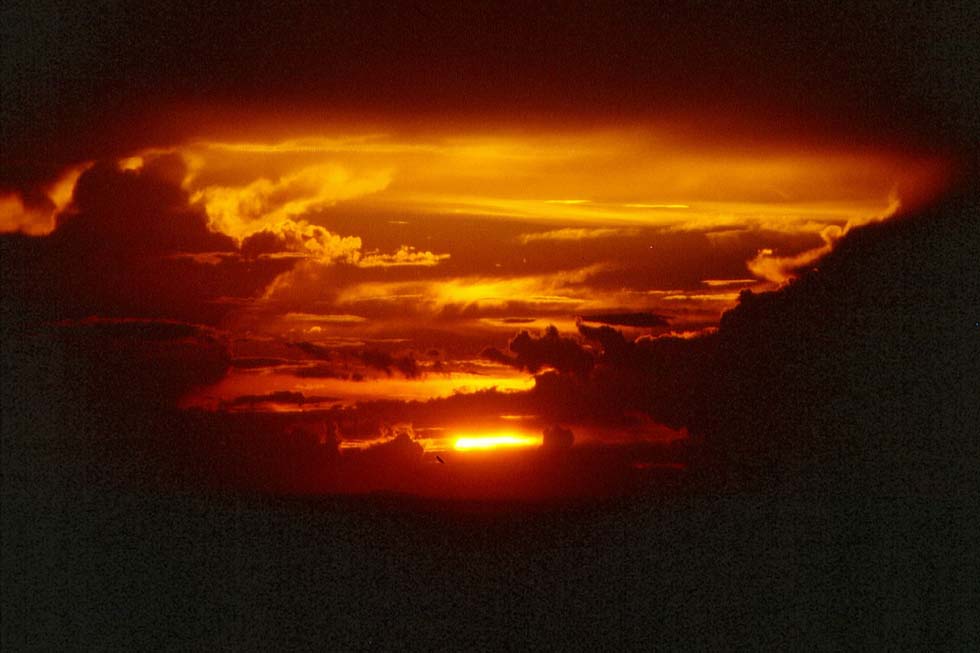
Mozambique
5th day, calm and sunny. Some dolphins are passing by. In late afternoon dark clouds, shaped like a sculpture, are overtopping the sunset. It’s night, when Zanzibar in the west must be passed. It would have been nice to visit its old Arabian city of Stonetown, but the call on this island, belonging to Tanzania, was cancelled “on security reasons” (who knows?).
6th day, Sunday, 8th April. The “MSC Rhapsody” is already moored on the quay in the Kilindi Harbour of Mombasa, Kenya, when breakfast is served. Most passengers undertake a pre-paid bus tour. A few ones prefer a taxi for visiting that city on an island, where Vasco de Gama had landed in the 15th century, where a Sultan ruled, then submitted to the Portuguese, after two centuries overthrown by Omani Arabs, later by the British. The taxi-driver shows us Fort Jesus, the Portuguese fortification, then misused as a slave trade center, situated close to the old harbour at the edge of the Indian Ocean, the Cathedral, filled with black people singing in a rhythmical sound during the Sunday mass, the Mosque and the Hindu Temple (and at the railway station the boss is guiding the rail fan to photograph the express bound for Nairobi, connecting there with a train for Lake Victoria, where the lake steamer traditionally has provided the connection further on to Uganda).
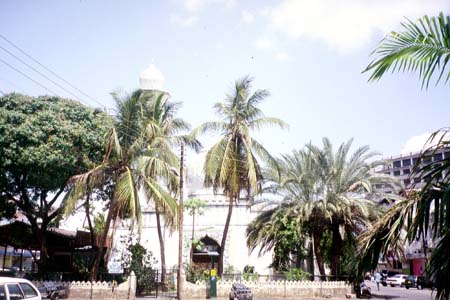
Mombasa, the Mosque
|
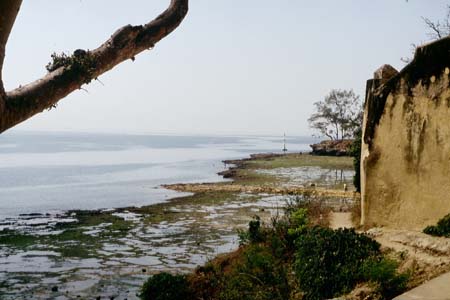
Mombasa, Fort Jesus
|
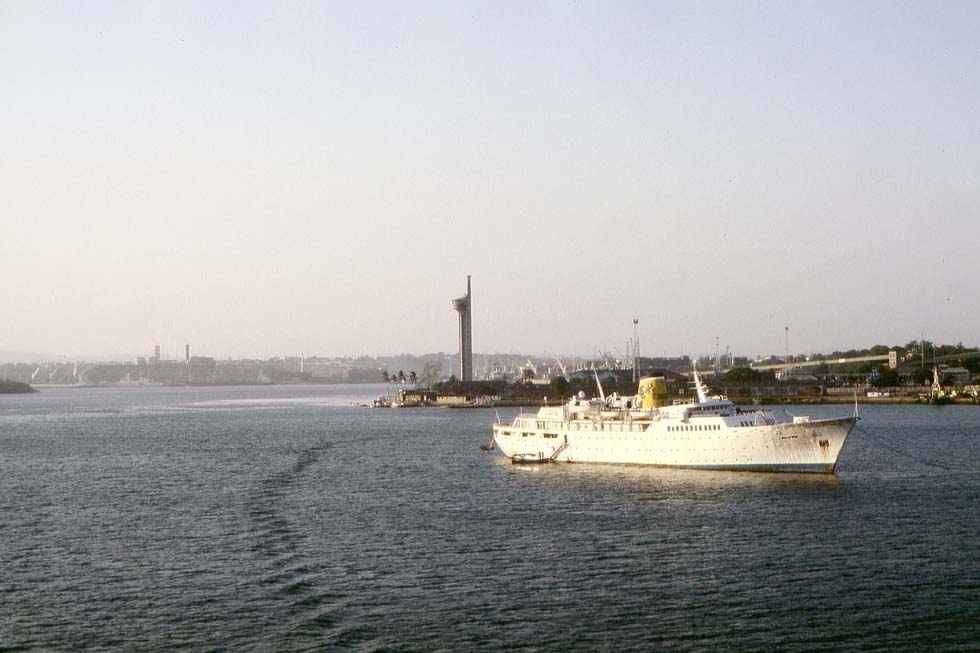
“Royal Star”, ex “San Giorgio” at Mombasa
The ship is sailing at 5 pm, at low speed through a natural channel, past freighters, the little Italian passenger vessel “Royal Star” (the former “San Giorgio” of Adriatica, later employed by African Safari Cruises on Mauritius trips), then passing the horribly crowded Likoni ferry, the baobab trees, cliffs and sandbanks, moving toward the open sea. There the pilot boat leaves. After an hour it comes back to take over a young crew member, who had been stricken by a heart attack (it was to be his last voyage). At eight in the evening the light, from Mombasa are disappearing on the horizon.
During the next days the course is to the southeast, thus avoiding the ‘No Go Area’, defined by the Maritime Security Centre of the EU Naval Force, trying to safeguard merchant shipping by deterring acts of privacy. This area stretches from the Somali Basin to the Gulf of Aden. The digital newsletter reports that for March 10 arrival of the German frigate “Rheinland-Pfalz” at Mombasa is expected, delivering nine captured pirates.
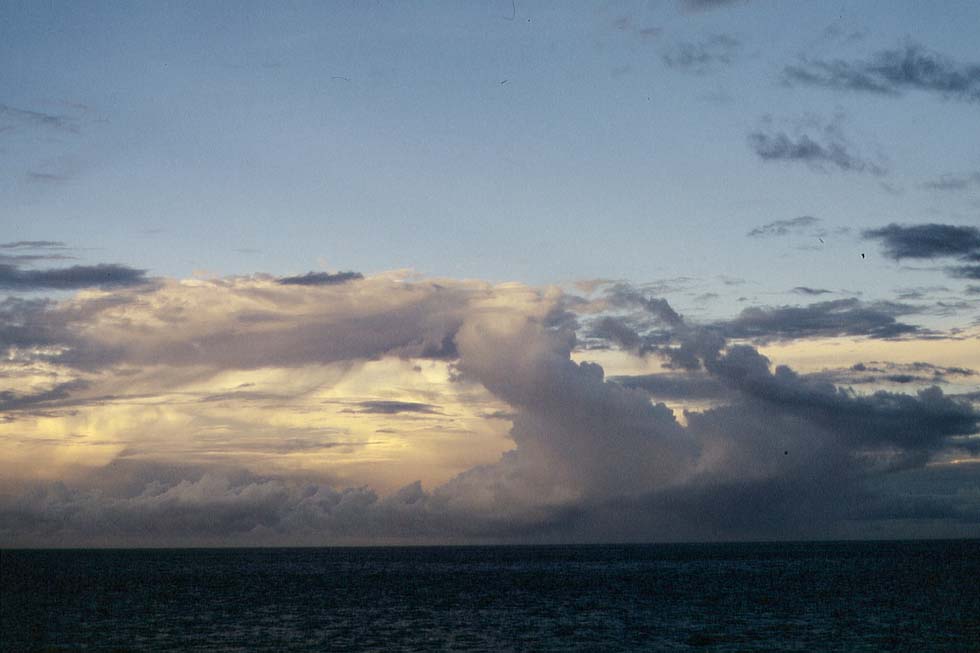
Between Kenya and the Seychelles
Seagulls are accompanying the “MSC Rhapsody” many hundred miles off the African coast. During night they have their resting place on the mast of the ship. On board among the usual entertainment venues, the classic concerts are a welcomed exception. Enjoy Chopin, Puccini, Bizet while sailing aboard an Italian ship crossing the seas of the Indian Ocean…
In the middle of the ocean, half-way between Durban and Calcutta, the Seychelles are situated, consisting of some hundred small granite and coral islands. On Wednesday, 11 March, towards noon the first island comes into view on port side, rocks and beaches are visible, then the ship sails round a cape, turns to port, a pilot boat approaches and finally the “MSC Rhapsody” is moored on the quay in the neighbourhood of palm trees, a fishing centre, yachts and a little town, Victoria on Mahe Island. The whole scenery is dominated by a dark mountain range, its black granite rocks covered with a dense tropical forest. The climate is warm and humid. British Leyland and Indian Tata buses are waiting for the passengers, but it’s nicer to discover the island by taxi. The driver is guiding us to white sand beaches, between rocks looking like sculptures, to the enormous land tortoises, to tea plantations amidst the forest, to viewing places, where the chains of islands spread over the turquoise-coloured sea can by admired, and to the airport, completely empty at this hour. The driver is glad to chatter in French, apart from Creole and English one of the three languages of the archipelago, and he explains that in the forests there are hiding neither tigers nor cobra snakes, that the islands are not threatened by hurricanes and that they have peace since generations. One thing no visitor can see is the legendary pirate’s cache, purportedly buried at Bel Ombre, not discovered until now. Back to the ship, it becomes clear that we have spent one day in paradise…
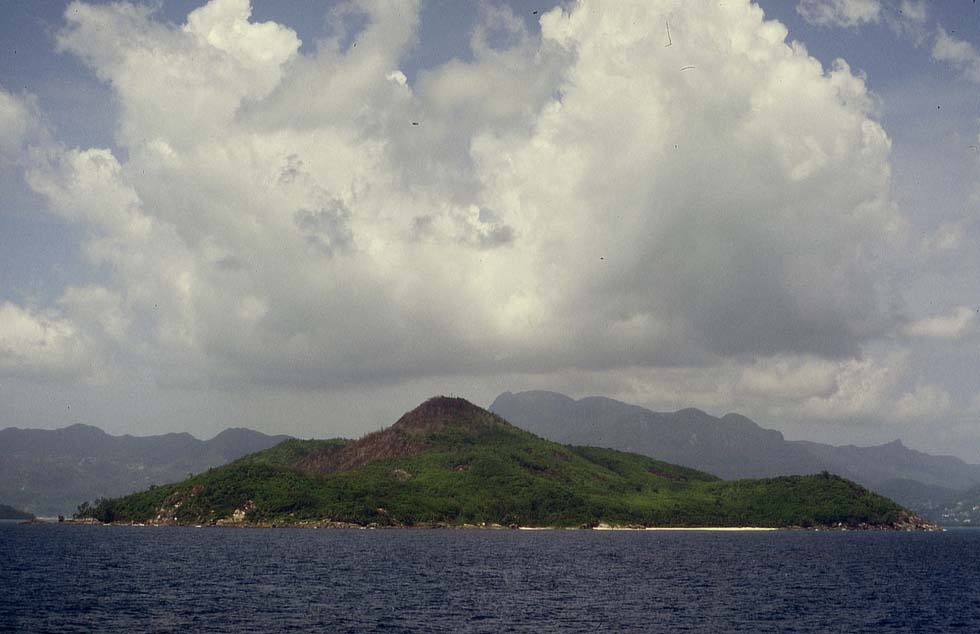
Mahe, Seychelles
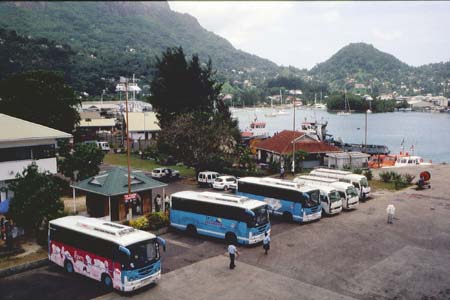
Victoria, the port
|
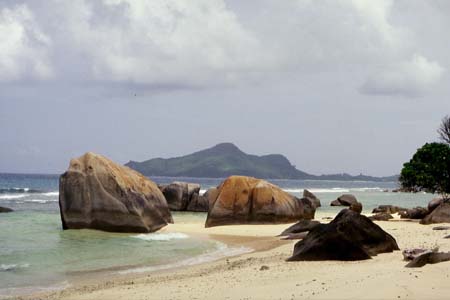
Mahe, Seychelles
|
After departure in the evening, the course is almost exactly in northern direction. The next morning a “Crossing the Equator Ceremony” takes place on the pool deck, for “King Neptune punishes those who will cross the Equator without His permission”. And passengers were warned: “Pay attention to your cameras, they will get wet”. Indeed, the warning was justified, for the ceremony and the procession along and inside the pool is going to be messy, wet and crazy, a truly ‘Italian’ Equator Ceremony.
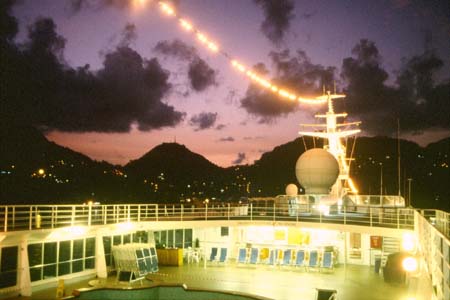
Leaving Victoria
|
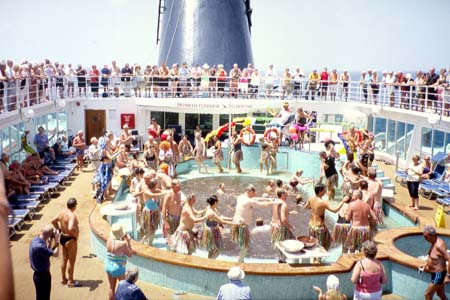
Crossing the Equator
|
During all these days in March 2009 the news from the economy worldwide are getting worse and worse. One bank after the other comes at the brink of bankruptcy. It could have been the stuff for a sinister novel of Thomas Mann in the dark years of the early 20th century… After the gala dinner let’s dance a waltz…
Between the Seychelles and Sharm el Sheikh, the next call, there are 7 days to travel on the open sea. Every morning is bright and sunny, a north-easterly light breeze is blowing, some clouds on the horizon are the last remainders of the winter monsoon. On board continuous activities are on offer, but as most passengers are aged couples, no few ones among them may think of their relatives or friends who no longer can make such a voyage, who are caught at home or in a sanatorium, or had already their last journey. The words of Rudyard Kipling may be recalled, written down during one of the endless voyages on board a mail steamer from India home to England hundred years ago:
“…all the soul of our sad East is there,
Beneath the house-flag of the P&O.”
In contrast to the mail steamers of the past, entertainment is always on offer, though the ship is not bigger than a P&O liner eighty years ago. Among the many items on the programme, a lecture on the history of piracy through the ages is surely the most uncommon one. Had it been chosen in consideration of our course round the Horn of Africa?
In the late afternoon, for the first time container ships and tankers are coming into view, one approaching, other ones on a parallel course. But where are the warships protecting that convoy? During night hours the course is altered to the west, circumventing the ‘No Go Area’, restricted due to piracy, and entering the Gulf of Aden, halfway between Oman and Socotra Island.
Sunday, the 4th day after departure from Victoria: Half a dozen merchant ships are following our course, thus enlarging the convoy. For today the Carnival Party is on the programme, half a month late, but that doesn’t matter. Many guests are wearing imaginative costumes, the combo is playing frantically American, Latino and African rhythms, cruise hostesses and entertainers mingle among the dancers, a young lady is dancing with her one-year old daughter Anna, and among all that folk no few people have dressed up as pirates. It’s a crazy night, carnival ‘stile italiano’…
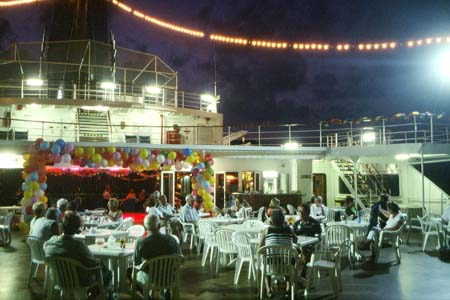
Carnival Italiano
|
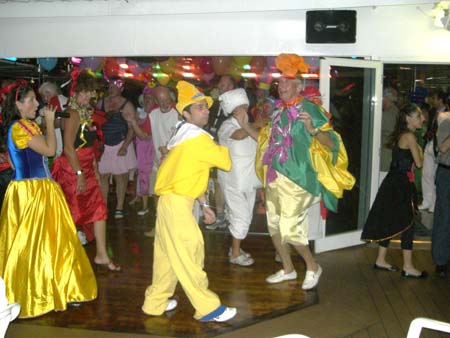
Carnival Italiano
|
During all these night hours the bridge staff and additional security guards have an enhanced lookout for the true pirates. In the morning a frigate is visible, only one… An officer informs that in the afternoon Djibouti will be passed. Land is coming into view around 3 pm, mountains in the distance, Yemen on starboard, Africa on port. On the African side Djibjouti must be hidden behind the mountains. It’s a naval base for fighting the pirates and a district crowded with refugees from nearby Somalia. The coast of Yemen with Perim Island is closer by, stony, arid, with some huts on a hill, a lighthouse or a lonely military outpost. We have passed the Bab el Mandeb Strait and are entering the Red Sea, leaving the pirates’ shoot behind, without seeing one of them – and so we have missed the chance of financing our cruise by writing a success-story for the media. Two Australians have done it before, reporting an attack of pirate boats on the “Athena” (the former “Stockholm” of 1948), but the shipping company Classic International Cruises claimed that they were no pirates, but have proven as harmless tuna trawlers. Roughly a month after our voyage the next MSC ship on a repositioning cruise from Durban, the 35,143-ton “MSC Melody” (the former “Atlantic” of Home Lines), was truly attacked north of the Seychelles, far outside the ‘no go’ zone. Fanciful stories have been published, but in reality it was the armed secret security staff, firing at the pirates, thus preventing the ship, passengers and crew from being captured.
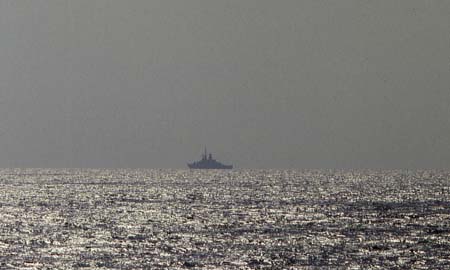
A warship in the Gulf of Aden
|
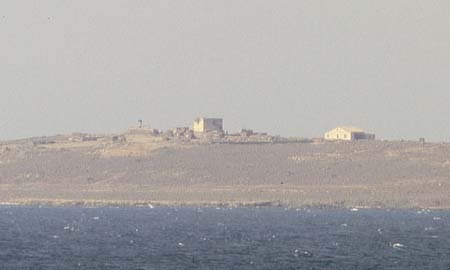
Perim Island
|
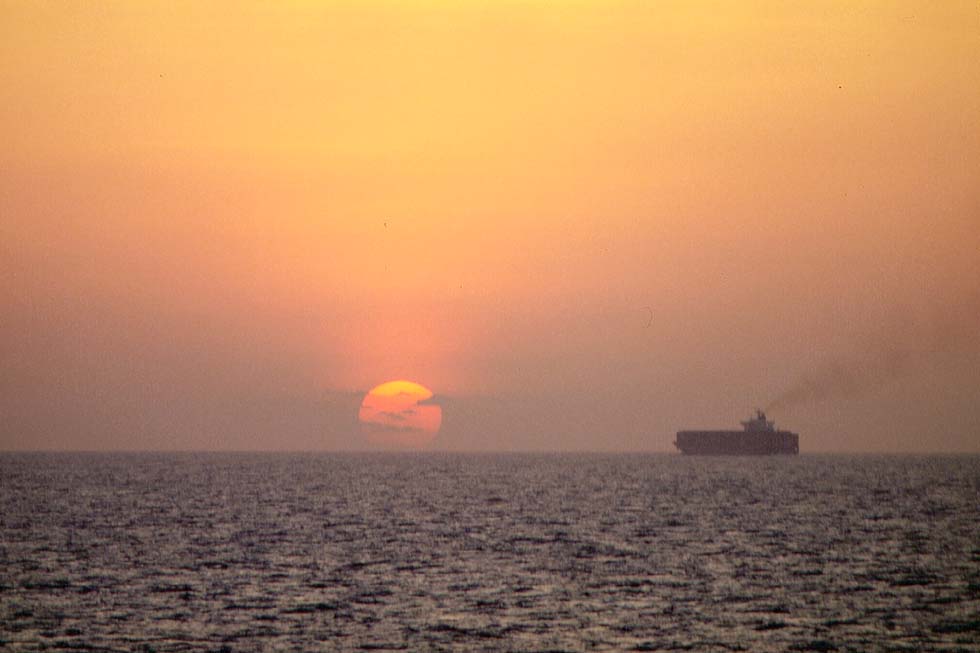
|